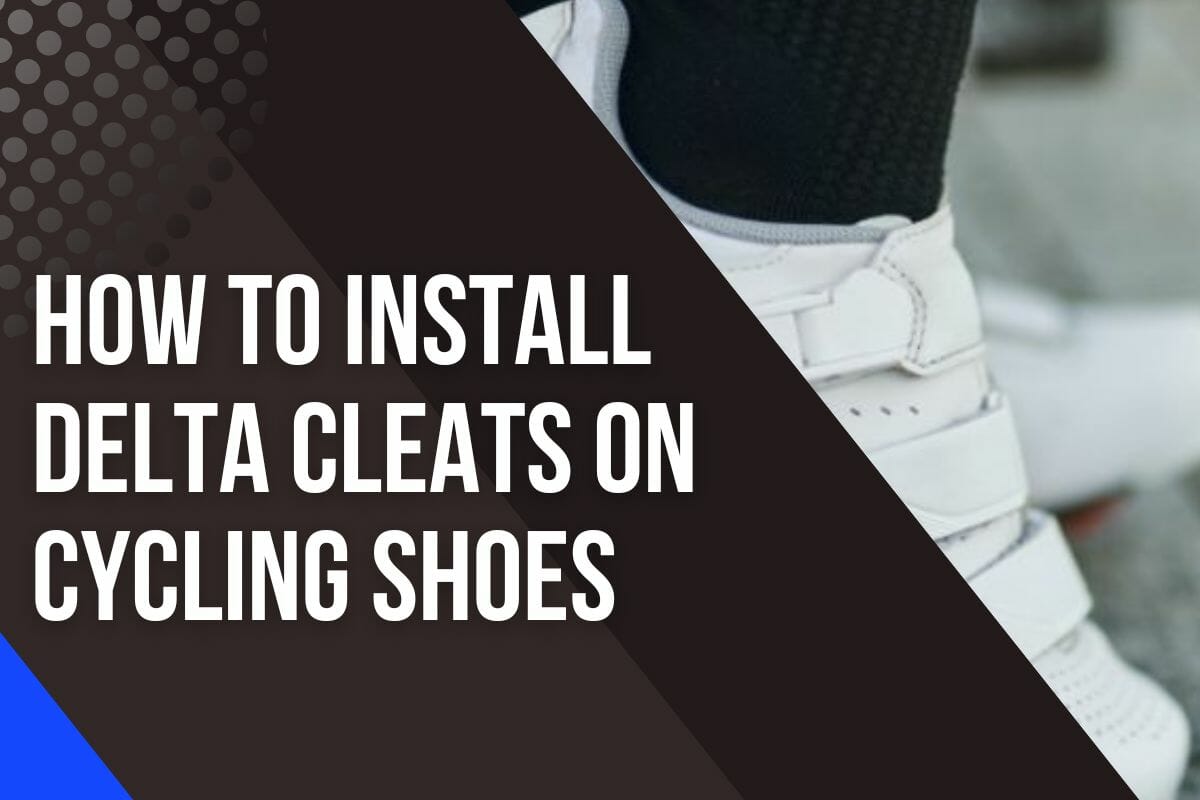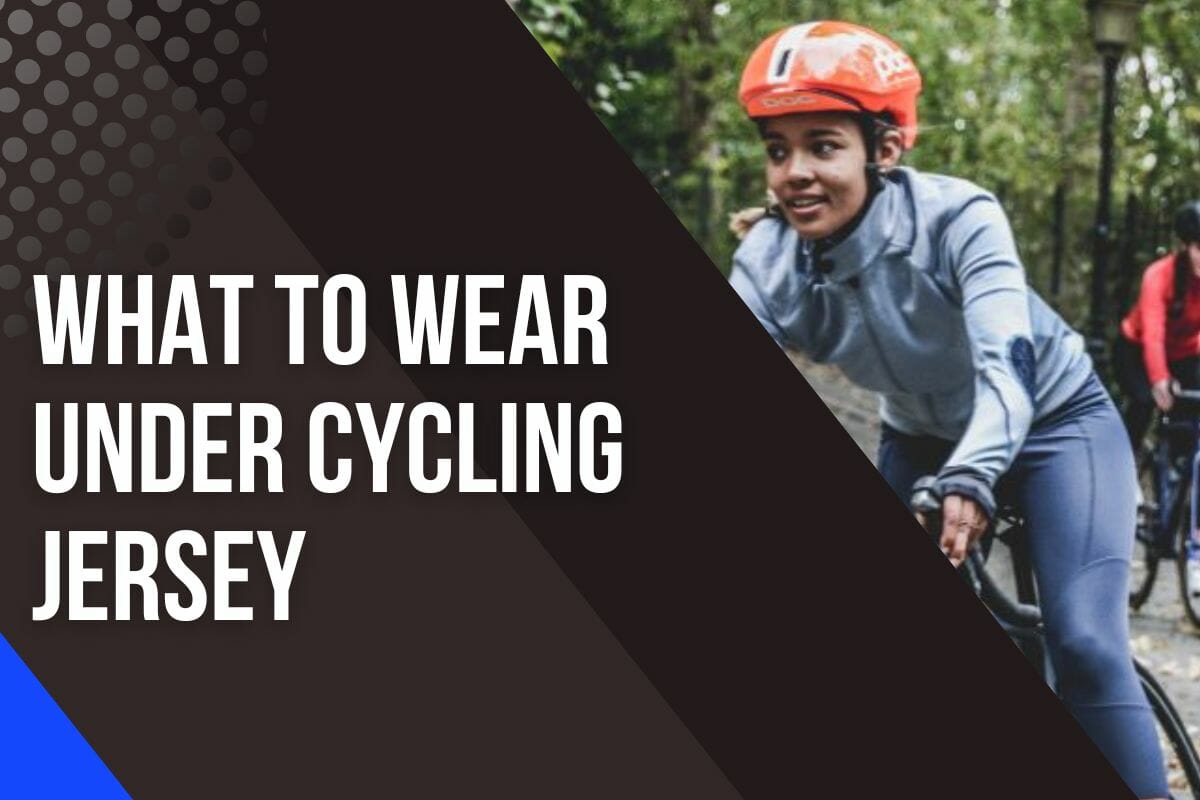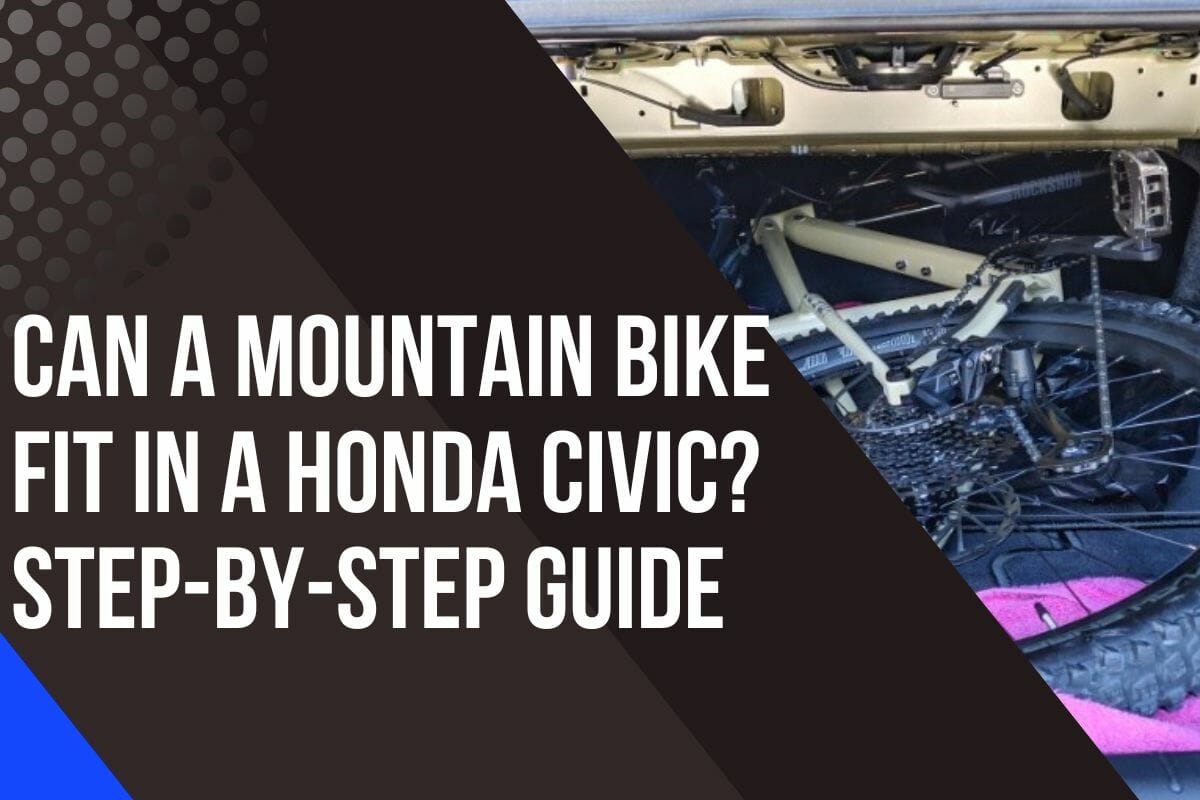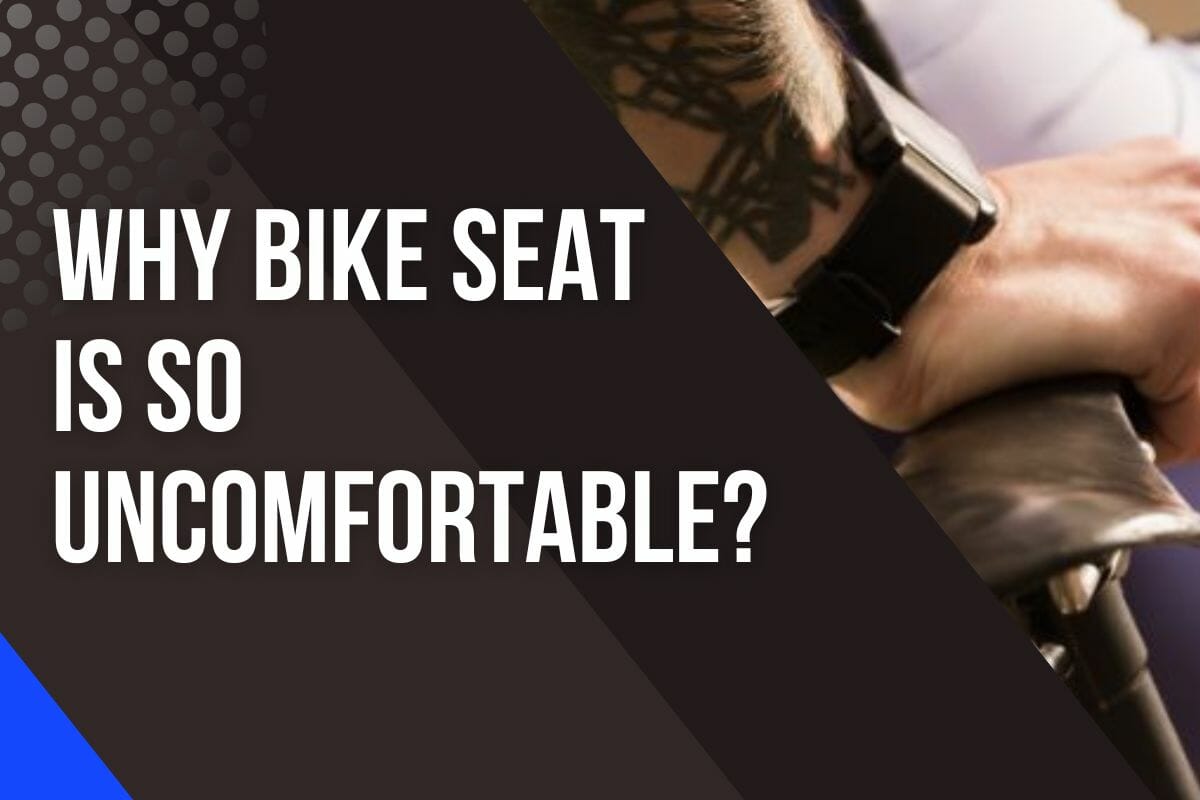What To Bring For Mountain Biking? The Ultimate Packing Checklist
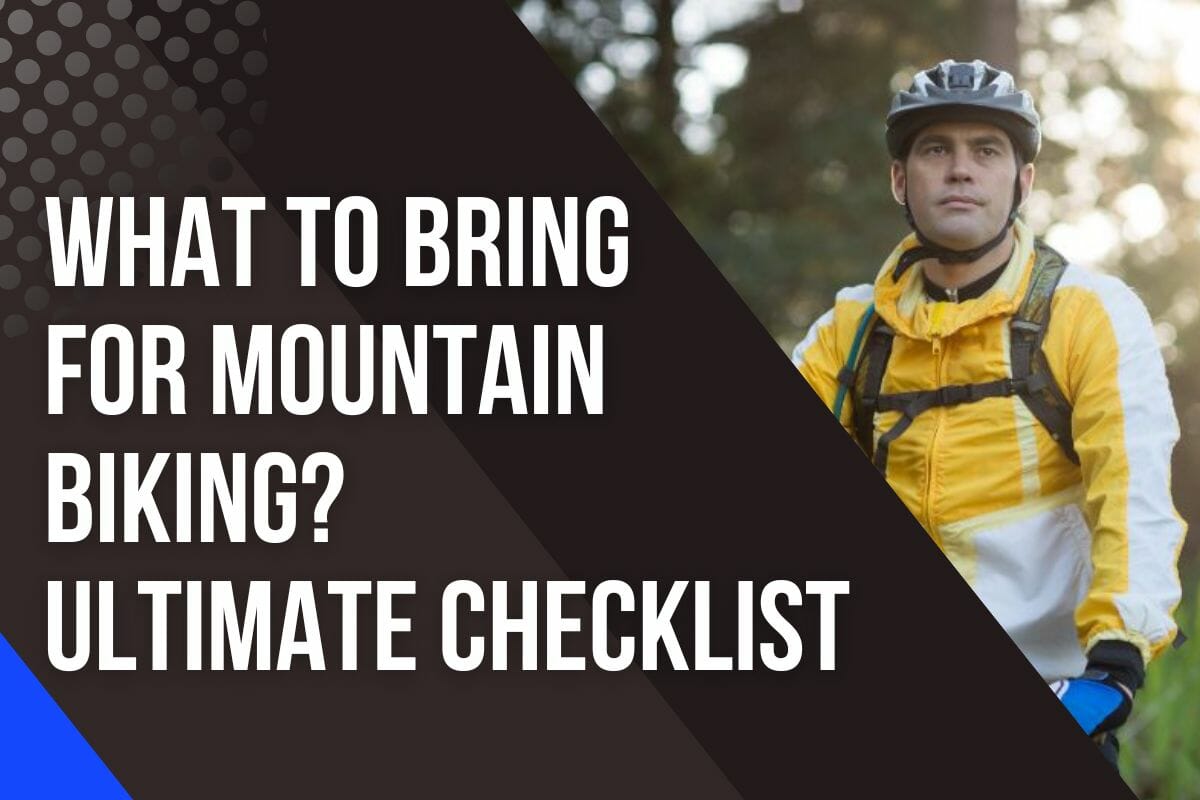
Do you love the thrill of mountain biking but always forget something important to bring?
That’s why I’ve put together a comprehensive list of what to bring when I’m going mountain biking, so I can focus on the ride instead of worrying about what I’ve forgotten.
In this article, I will share this checklist with you.
From essential gears and repair tools to GPS, I’ll cover everything you need to have a successful and enjoyable ride.
So, if you’re ready to hit the trails fully prepared, keep reading to learn what to bring on your next mountain biking adventure.
Mountain Bike Clothing
If you’re planning a mountain bike ride, here’s a list of clothes that you should pack.
The weather and trail conditions can vary greatly, so customize your packing list to fit your specific trip.
Mountain Bike Jerseys (2-4 pairs)
Breathable and quick-drying mountain bike jerseys are a must-have for any mountain biker.
You’d want to choose a jersey that allows air to circulate and wick moisture away from your skin, keeping you dry and comfortable.
I recommend bringing around 2-3 jerseys for a 5-day ride, including a long sleeve one for colder days.
My favorite jerseys:
Head over to this post to get a full list of what to wear for mountain biking.
Wind Jacket (1 pair)
I am obsessed with my Patagonia Houdini jacket – it’s my go-to wherever I go for outdoor activities. It’s incredibly lightweight (only a mere 3.2 ounces) and easily packable, making it the perfect layer for those cooler days or light rain showers.
However, I’ve noticed that it doesn’t breathe as well as I would like, especially when I’m pedaling.
That’s why I highly recommend checking out the Houdini Air Jacket, which provides better airflow and ventilation, ensuring you stay cool and comfortable on even the most intense of rides.
Baggy Shorts (2-3 pairs)

When I hit the road on my trusty bike, I always make sure to bring along two sets of loose and comfy shorts.
Unless you’re facing some seriously bad weather or a whole lot of mud and rain, 2 pairs should be more than enough to get you through your adventure.
Lightweight Pants (1 pair)
For colder days, pack a pair of lightweight pants like the Troy Lee Designs Skyline Solid Clay (men) or Luxe Pants (women). They’re durable and flexible, and provide protection against abrasions and falls.
Chamois / Padded Liner
Chamois are designed to prevent chafing and provide padding, making them essential for longer rides. You should pack around 3 chamois, with the DHaRCO Party Pants Liner Shorts (men) and Terry Bella Prima liners (women) being a favorite among riders.
Mountain Bike Gloves (1-2 pairs)
A good pair of mountain bike gloves like the HANDUP gloves can make a huge difference in your ride.
They provide grip, protect your hands from cuts and scrapes, and absorb shock, improving your overall performance.
It’s best to choose gloves made of breathable materials to prevent sweat buildup.
Socks (3-5 pairs)
Pack around 3-5 pairs of socks that are lightweight, breathable, and moisture-wicking.
Proper socks can help prevent blisters and keep your feet dry and comfortable throughout the ride.
I personally love HANDUP socks for their durability and wide range of colors.
Buff (1 pair)
A buff like the CoolNet Buff can serve as an additional layer of protection against the heavy wind for your face and neck. It’s lightweight, multifunctional, and can be worn in different ways to suit your needs.
Lightweight Base Layers (2-3 pairs)

When I hit the trails, I always make sure to pack two different weight layers to be prepared for anything. A lightweight long-sleeve layer and a mid-weight long-sleeve layer are my go-to choices.
These layers can be worn over my bike jersey or easily packed away in my backpack for unexpected weather changes.
They are quick-wicking and dry fast. It’s also easily stuffed into a pack without taking up too much space. This little gem has saved me on many occasions.
Sports Bras (2-3 pairs)
I asked my girlfriend and she said sports bras are essential for women, especially in hot weather so they can ride with an unzipped jersey. She loves the Patagonia Wild Trails bra and always brings at least 2 pairs so she can switch and let the others dry out.
Thermal Jacket (1 pair)
I’m absolutely loving my Pearl iZUMi Summit Hooded Thermal Jacket (also available for women) as my go-to mid-weight layer for those chilly mornings and cooler days.
This jacket is cozy and will keep you warm and toasty no matter what the weather throws your way.
Casual Clothes
While the focus of a mountain biking trip is obviously the ride, don’t forget to bring some “casual” clothes along with you.
After all, you’ll likely want to explore nearby towns and restaurants in between rides, or maybe just lounging around camp.
Here are some necessary items of clothing that you should pack. Customize as necessary.
- 1 pair of jeans/jogger pants (I prefer joggers)
- 2 pairs of shorts or skirts
- 2 tank tops
- 2 pairs of T-shirts
- Sneakers or casual shoes to walk around
- Sandals
- Socks, underwear, bras
Mountain Biking Gears
If you want to hit those trails safely and with maximum enjoyment, you better make sure you’ve got the right gear. It’s an absolute must for any mountain bike ride.
Helmet

The most essential piece of gear is your helmet. Choose one that fits you perfectly and stays securely in place while you ride.
If you’re looking for a new helmet that’s perfect for your travels, then the Bell Super DH helmet should definitely be on your radar. It has a removable chin bar, which means you can switch between a ‘normal’ helmet and a full-face helmet whenever you need to.
Alternatively, the Smith Convoy is my top pick for anyone looking for great value in a feature-packed entry-level option. Its main feature is MIPS (Multi-directional Impact Protection System) technology which protects your head from rotational forces during crashes.
Cycling Glasses / Goggles

I always make sure to pack both my sunglasses and goggles. POV Devour Sunglasses is what I’m mostly using right now.
The sunglasses are perfect for when I’m wearing my regular helmet, while the goggles come in handy when I’m rocking my full-face helmet.
One thing to keep in mind is to pack your sunglasses in a sturdy case to prevent any damage during travel.
Meanwhile, the goggles usually come with a soft sleeve for storage.
Pads / Body Armor

Knee pads are another important piece of gear that should be worn to safeguard the knees during physical activity. They are especially important when riding technical trails that require jumps and drops.
The Fox Enduro Sleeve Knee Pads and Fox Launch Pro Knee Guard are my go-to.
Chamois Cream
Chamois cream can be a lifesaver! If you’re flying and don’t want to bring a full tube, I always use Chamois Butt’r which also comes in small packets, which is super convenient. Bring one pack per day per rider just to be safe.
Hydration Backpack
The hydration pack is what you need to easily stay hydrated. These packs come with a nifty water bladder and straw, making it easy to drink while on the go.
Just like a backpack, they have extra space for storing accessories and clothes, too. My personal favorite is the Camelbak (women’s) and Gregory (women’s), which are great for day-long excursions and other outdoor adventures.
Food
Make sure you bring plenty of snacks and water. Mountain biking is an intense workout that burns calories like nobody’s business.
To keep your energy levels up, I recommend packing some energy bars. They’re compact, easy to carry, and provide a quick boost of carbs and sugar. But for longer rides, you’ll want to plan ahead.
Think about where you’ll be able to refuel along the way and make a rough plan for when and where you’ll take breaks.
Bike Repair Tools & Spare Parts

When shredding on the trails, it’s crucial to be self-reliant and ready to tackle any unexpected mechanical hiccups.
That’s why having a well-equipped toolkit and spare parts stash is an absolute must.
Below, we’ll dive into the essential tools and spare parts every mountain biker should have in their backpack to guarantee a smooth and exhilarating ride.
1. Tubeless / Puncture Repair Kit
A tubeless repair kit is designed to seal punctures quickly and efficiently, allowing you to continue your ride without worrying about flat tires.
The kit typically includes a tubeless plug and plug tool. More expensive options usually include wrenches, screwdrivers, and other tools.
They can be stored in a saddlebag, jersey pocket, or mounted on the bike.
2. Spare Tubes
Bring at least two spare tubes that are the correct size for your wheel size and tire width, as bringing the wrong size can render them useless.
You never know what can go wrong on the trail, so it’s always better to be overprepared than underprepared.
Where To Buy: Amazon / Jenson / Rei / Backcountry / Competitive Cyclist
3. Hand Pump
Mountain biking can be full of surprises, and one of the most frustrating ones is experiencing a flat tire on the trail. This is where a mini tire pump comes in handy.
Where To Buy: Amazon / Backcountry / Competitive Cyclist
4. Shock Pump
Your bike’s suspension settings play a pivotal role in how it handles different types of terrain, and they can be impacted by changes in weight or elevation.
With a shock pump, you can easily adjust the air pressure in your suspension system to fine-tune its performance based on the weight, terrain, and elevation you’re experiencing.
5. Multi-tool with Built-in Chain Tool
Whether you need to adjust the seat height, tighten loose components, or make chain repairs, a multi-tool provides a convenient and portable solution to fix the most common issues.
Where To Buy: Amazon / Jenson / Rei
6. Tire Lever
Tire levers assist with removing and installing tires from rims, a task that can be quite challenging without them.
This can be especially difficult in filthy winter rides when your hands are wet and freezing, making it near impossible to remove or install tires with bare hands alone. In such situations, a sturdy tire lever can really come in handy.
Where To Buy: Amazon
7. Emergency Tire Boot
While it’s always recommended to use tubeless tires for mountain biking, which can seal smaller punctures on their own, it’s still advisable to carry a few emergency tire boots in your backpack to be fully prepared.
These can be used to patch up bigger cuts that may not be able to be sealed by a tubeless repair kit alone.
10. Chain Lube
To keep your chain running silently and smoothly on multi-day rides or in areas with potential downpours or river crossings, it’s wise to pack a portable dropper bottle with some chain lube.
A small container can be easily carried in your pack, and it will keep your gear from getting messy or adding excess weight.
12. Rear Derailleur Hanger
Bent or broken derailleur hangers can cause serious issues during your ride. Signs of damage include difficulty shifting gears, problems with chain retention, and a misaligned derailleur.
Riding with a damaged hanger not only ruins your ride but can also lead to further damage to your bike.
Where To Buy: Amazon / Jenson / Competitive Cyclist
13. Cable Ties
These small plastic strips can be used to secure loose cables, keep brake hoses in place, or even tie down gear onto a backpack or bike frame.
Where To Buy: Amazon
14. Other Spare Parts
- Tire Pressure Gauge (Amazon / Jenson)
- Master Link (Jenson)
- Valve Cores (Jenson)
- Brake Pads (Jenson)
- Spare Shifting Cable (Jenson)
Compact First Aid Kit
A compact first aid kit can make all the difference in treating minor injuries and preventing them from escalating into more serious issues.
It is even more important when heading to remote areas with limited access to medical facilities.
I personally always carry my pre-made kits from MyMedic for mountain biking or other outdoor activities. Their Sidekick First Aid Pouch is an absolute lifesaver with 70 first aid items to cover almost any emergency situation.
And if you’re on the hunt for a kit specifically tailored to biking, then consider getting the Cycle Medic (I highly recommend the Pro version) or the super lightweight Biker Med Pack.
Batteries and Charging
Make sure all your electronic gear is fully charged up. We all know it’s best to start with a full battery, but sometimes we forget. So, it’s always a smart move to pack some extra batteries and chargers just in case.
And if you’re using electronic gearing or an e-bike, it’s definitely worth bringing a spare battery or charging cable to avoid any unexpected hiccups.
You don’t want to be stranded on the side of the mountain with a dead battery, do you?
But here’s a tip: keep an eye out for any charging opportunities along the way. Maybe there’s a rest stop with an outlet or a charging station at a nearby cafe.
Money
While many places now accept digital payments, it’s still a good idea to carry cash, especially if you’re planning a long ride.
During extended rides, you may need to stop for supplies or refreshments, and many places don’t accept cards.
Having cash ensures that you can purchase what you need, even if you’re in a remote area.
Headlamps
Headlamps can be essential when rides take longer than expected or when riders find themselves riding on dark roads.
The Black Diamond Storm 500-R Headlamp is an excellent option for lighting the way on mountain bike trails. This headlamp is waterproof and lightweight and offers a bright, even beam that illuminates the trail ahead.
With a long battery life of up to 150 hours (low setting), 42 hours (reserve setting), and 5 hours for maximum setting, you won’t have to worry about running out of light during long rides.
Where To Buy: Rei / Backcountry
GPS Watch
If you’re an avid mountain biker, keeping track of your ride is absolutely essential.
Whenever I hop on my bike, I always make sure to strap on my trusty Garmin Epix (Gen 2) Sapphire watch so I can keep tabs on my distance, elevation gains and losses, GPS routes, and so much more.
But let’s not forget the golden rule of bringing along that all-important charging cable!
Where To Buy: Rei / Backcountry
GoPro
If you’re someone who loves to capture every moment of your journey, then having a camera is an absolute must. You can document your progress, relive your experiences, and capture some truly stunning scenery that you’ll want to revisit time and again.
Now, you might be thinking that your trusty iPhone will do the job just fine, but let me tell you, there are some serious advantages to using a GoPro instead.
Unlike your phone, a GoPro is built to withstand even the toughest of terrains, making it the perfect companion for any mountain biking trip.
I like using GoPro because it’s easy to mount to my helmet or handlebars. And adjusting the angle to get the perfect shot is as easy as pie.
Sunscreen and Lip Balm
UV rays can be extremely harmful, and when you’re riding on trails, you’re constantly exposed to them. Sunscreen with a high SPF rating can help protect your skin from long-term damage caused by the sun while also reducing your risk of skin cancer.
Your lips are also prone to dryness and chapping, especially during windy, harsh conditions, which can be painful and uncomfortable. This is where lip balm comes into play, keeping the lips moisturized.
Rain Jacket

Waterproof jackets are designed to keep riders dry even in the most intense rainstorms. If you’re going through areas with wet climates, always bring a pair.
I personally use the Showers Pass Elements Jacket as it offers excellent water resistance and breathability, making it a perfect choice for mountain biking.
Where To Buy: Showers Pass (women’s)
Survival Blanket
These blankets are designed to provide insulation and retain body heat, which can be particularly useful in situations where the injured person may be exposed to cold temperatures or wet conditions.
A survival blanket can prove handy in a variety of scenarios. For instance, unexpected weather changes can put a dent in your mountain biking plans, but having a survival blanket on hand can help keep you warm and dry.
Where To Buy: Amazon / Rei / Backcountry
Final Thoughts
Mountain biking is a challenging adventure that requires proper planning and preparation (check out our 18 mountain biking tips to ride like a boss).
From the basic essentials like hydration packs, tire levers, and spare tubes to medical kits and protective gear such as helmets, gloves, and elbow pads, we have covered all the necessary items you need to bring on your ride.
With this ultimate packing checklist, you can rest easy knowing that you have everything you need.
So, grab your gear, hit the trails, and enjoy the beauty of nature on your next mountain biking adventure!
